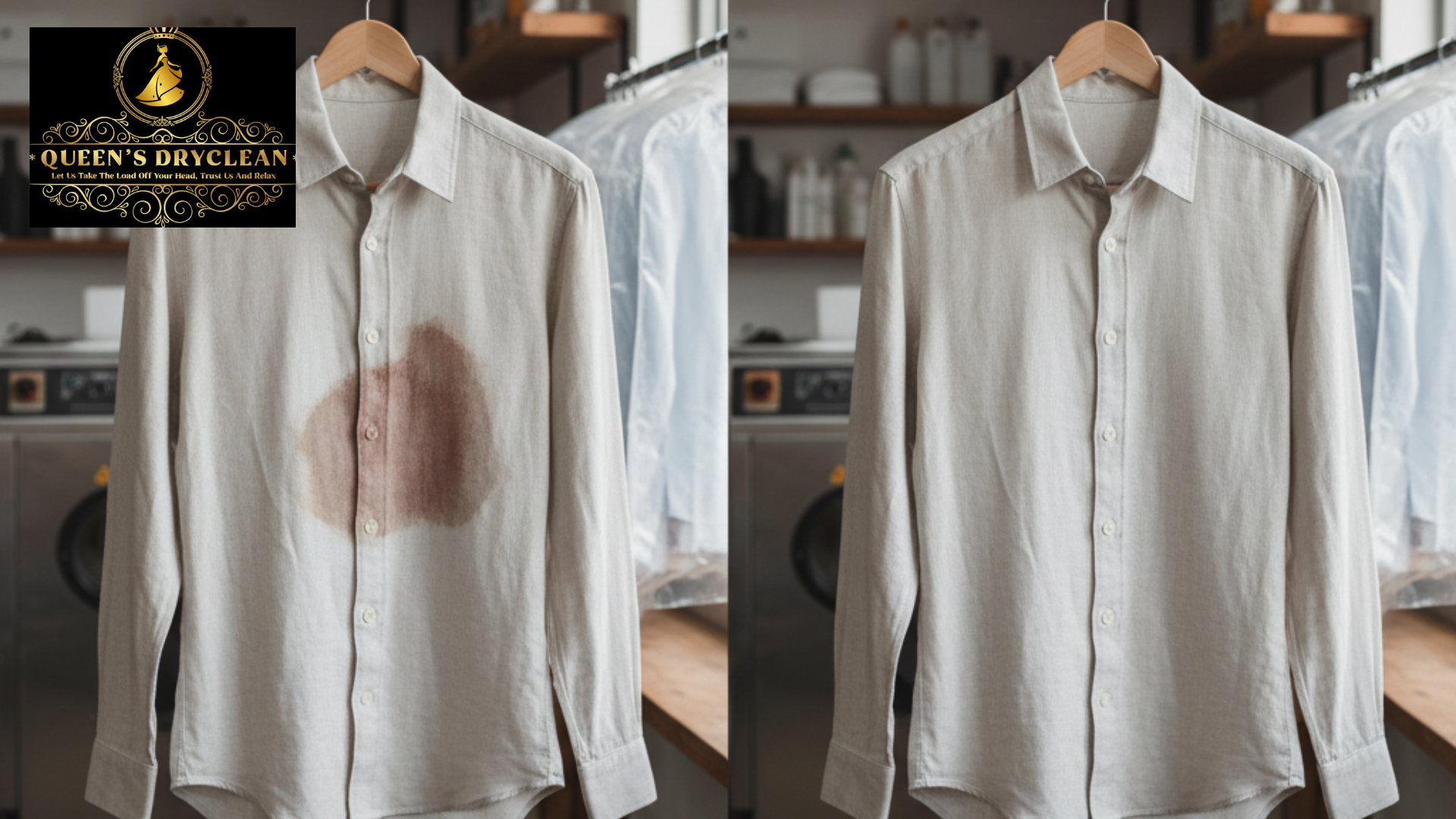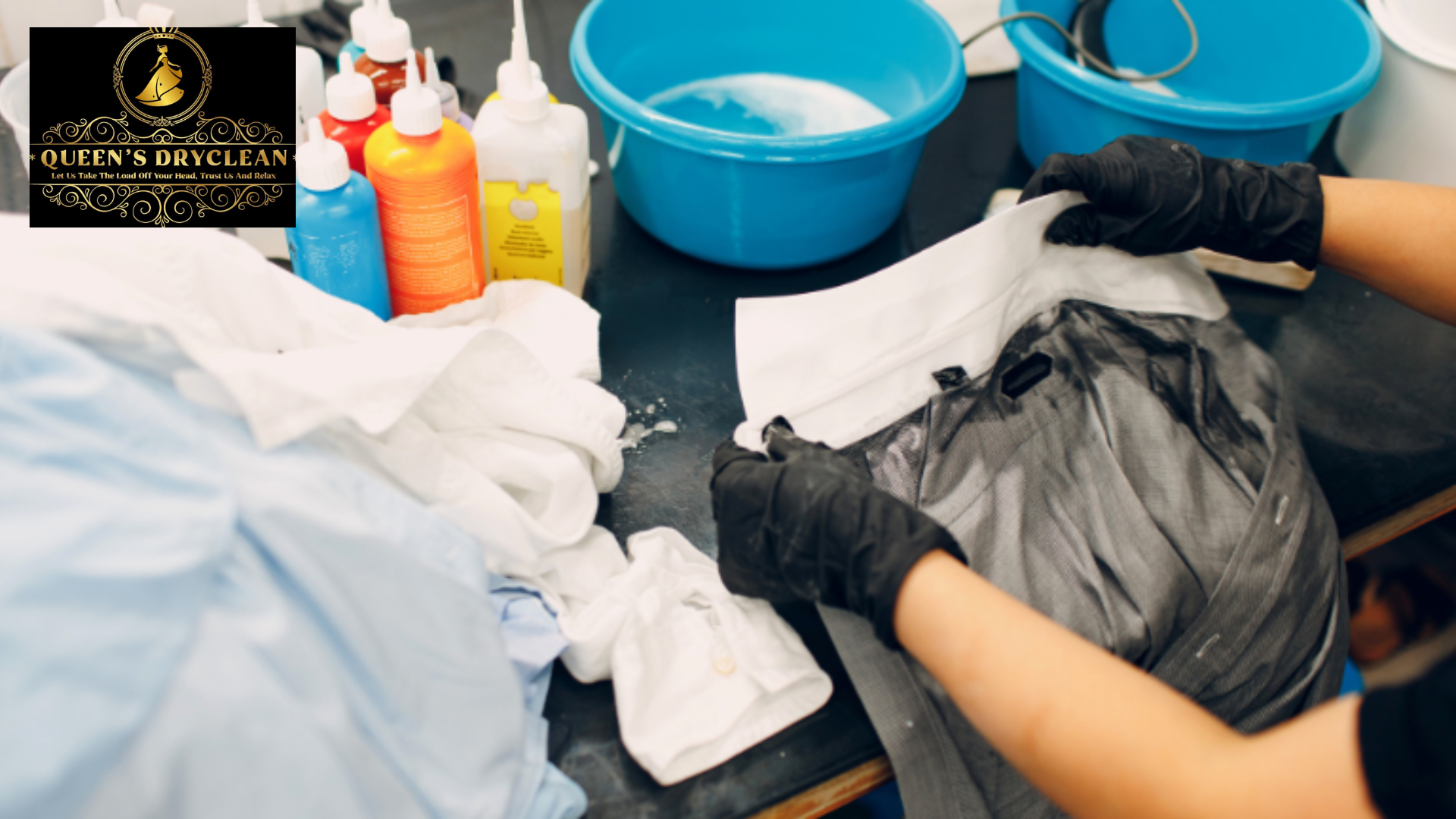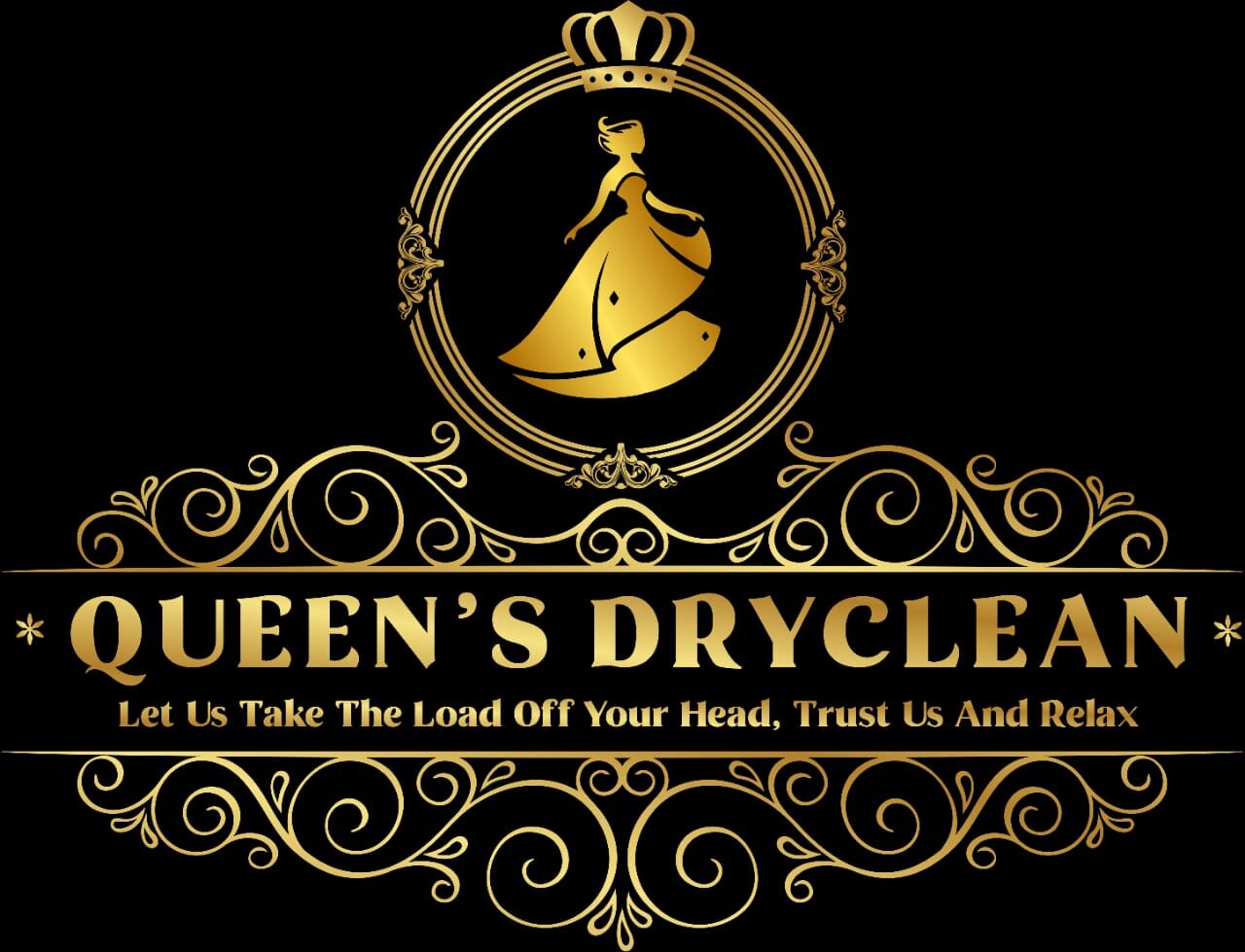Stain Removal Secrets Only Expert Dry Cleaners Know
Spilled red wine on your cherished silk saree? Dropped butter chicken on your shirt during an offsite? Most people panic and rush to Google for quick-fixes : toothpaste, Dettol, lemon juice or even hair conditioner. But here’s the fact: home stain removal often causes more harm than good. The wrong hack can spread the stain, damage the fabric or even bleach the colour permanently.
At Queens Dry Clean , we see this almost every week. People bring garments that could have been saved timely until home remedies made them worse. Actual stain removal is not guesswork : it’s science.
In this blog, you’ll discover:
- How professionals remove oil and wine stains safely
- The best stain removal techniques for clothes
- Dry cleaning vs home stain removal : when to stop DIY
- How to remove tough stains from silk and wool without ruining them
If you treasure your wardrobe, this guide will save you stress, money and heartbreak.
Understanding Stain Types
Not all stains act or react the same way. Professional cleaners first identify the stain type before selecting the right treatment.
Regular stain categories:
- Oil-Based Stains – Ghee, butter, foundation, perfume
- Tannin Stains – Tea, coffee, wine, fruit juice
- Protein Stains – Milk, blood, sweat
- Dye Stains – Ink, Holi colour, turmeric
Employing the wrong method on the wrong stain can lock it forever. For example, hot water on protein stains makes them tougher to remove. And that’s why diagnosis comes before treatment in professional cleaning.

Dry Cleaning vs Home Stain Removal
Here’s a swift guide to know when you can DIY and when to step away immediately.
Stain & Fabric | DIY Safe? | Professional Required? |
Tea on cotton T-shirt | Blot and Rinse | Not needed |
Oil on silk saree | Never scrub | Dry clean |
Wine on linen dress | Risky | Professional solvent |
Ink on formal shirt | Dab with alcohol lightly | Full removal needs expert |
Rule: If the fabric is expensive, sentimental and/or delicate, leave it to the experts.
How Professionals Remove Oil and Wine Stains
At Queens Dryclean, stain removal observes a careful procedure:
- Fabric and stain inspection under brilliant light
- Spot-testing solvent on an unnoticeable area for safety
- Administering specialised stain agents : water or chemical-based
- Gentle blotting and never rubbing
- Steam extraction or supervised soaking
- Neutralising chemicals to avert rings or fading
- Heat pressing to restore original structure
Every step protects both colour and texture, which home methods cannot certify.
Best Stain Removal Techniques You Can Utilise (Safely)
Blot, never Rub
Use cold water first if it’s not oil
Place a cloth under the stain to prevent from spreading
Sprinkle talcum powder on new oil stains (on cotton only)
For silk and wool : Do Absolutely Nothing. Send it to the dry cleaner.
Case Study: Haldi Disaster Saved in 48 Hours
The bride’s mother wore a Kanjeevaram silk saree at the haldi ceremony. A relative accidentally smudged turmeric paste while hugging her. Hysterically, she tried to wash the patch with soap water. The colour bled immediately. She brought it to Queens Dryclean in tears. After 48 hours of expert treatment, the stain was gone completely. Her reaction?
“I thought it was gone for good but it came back glowing!”

Conclusion
Stain removal is not about muscle or pressure, it’s about knowing the fabric, the stain and the science behind it. Home antidotes may work on basic cotton wear, but silk, wool and linen deserve expert care. Instead of scrubbing relentlessly, send a quick photo to Queens Dryclean. We’ll tell you whether it’s retrievable and how fast we can restore it.
Frequently Asked Questions
-
1. How do professionals remove oil and wine stains?
Experts use fabric-safe solvents, spot testing, and steam extraction to lift oil and wine stains without damaging color or texture. It’s the safest way to clean delicate garments.
-
2. What are the best stain removal techniques for clothes?
Blot, don’t rub; use cold water for non-oil stains; and apply talcum powder for new oil stains. For silk or wool, always opt for professional stain removal.
-
3. When to choose dry cleaning vs home stain removal?
Use home methods for minor stains on cotton or polyester. For delicate or costly fabrics like silk or wool, professional dry cleaning prevents fading or fabric damage.
-
4. How to remove tough stains from silk and wool?
Avoid scrubbing or water. Professionals remove tough stains from silk and wool using gentle solvents and steam treatment that protect the fabric’s sheen and softness.
-
5. Why prefer expert cleaning over DIY methods?
Dry cleaners identify stain type and fabric before treatment, ensuring safe results. DIY hacks often spread stains or bleach colors, reducing garment life.
